by Anthony A. Stein, Parksville, Missouri
One of the most popular Mississippian artifacts today is the dislcoidal. What is a dislcoidal? The easiest answer is that a dislcoidal is a round Mississippian game stone that was used in the ancient Native American game known as chungkey or chunkey. No description of discoidals would be complete without some description of the game itself. In 1775, James Adair, in his 18th-century English, wrote a description of the game. The language seems rather difficult to following in places, but the message seems clear enough:

“The warriors have another favorite game called chungke, which, with propriety of language, may be called “running hard labor.” They have near their state-house a square piece of ground well cleaned, and fine sand is carefully strewn over it, when requisite, to promote a swifter motion to what they throw along the surface. Only one or two on the side play at this ancient game. They have stone about two fingers broad at the edge, and two spans round: each party as a pole of about 8 feet long, smooth and tapering at each end, the points flat. They set off abreast of each other at six yards from the end of the playground; then one of them hurls the stone on its edge, it as direct a line as he can, a considerable distance toward the middle of the other end of the square; when they have run a few yards, he darts his pole anointed with bears oil, with a proper force, as near as he can guess in proportion to the motion of the stone, that the end may lie close to the stone; when this is the case, the person counts two of the game, and, in proportion to the nearest of the polls to the mark, one is counted, unless by measuring both are found to at an equal distance from the stone. In this manner, the players will keep running most part of the day, at half speed, under the violent heat of the sun, staking their silver ornaments, their nose, finger, and ear rings; their breast, arm and wrist-plates, and even all their wearing apparel, except that which barely covers their middle. All the American Indians are much addicted to this game, which it seems to be of early origin, when their forefathers used diversions as simple as their manners. The hurling-stones they use at present were, time immemorial, rubbed smooth on the rocks, and with prodigious labor, they are kept with the strictest religious care, from one generation to another, and are exempted from being buried with the dead. They belong to the town where they are used, and are carefully preserved.”
Discoidals, sometimes called discs, were treasured tribal possessions through the Mississippian world. They have been found across all of the great Mississippian lands including the states of eastern Oklahoma, Missouri, Arkansas, Illinois, Indiana, Tennessee, Kentucky, Alabama, Georgia, Louisiana and Mississippi. Although styles often very from region to region, they were all used as game stones. Discoidals began appearing at Late Woodland sites in eastern Missouri and southern Illinois around 700 A.D. By Mississippian times, chuckey’s popularity had spread through the Mississippian world. Some Mississippian sites have produced more than one discoidal style, while others have produced only a single style.
Many surviving discoidals are both beautiful and durable. Quartz and granite were often used in the making of these popular game stones. Both materials are extremely hard, and they had to be. Discoidals were continually used in sporting contests over generations, so they had to be durable. A very few discoidals were made from colorful flint. Discoidals are very popular today with collectors because they come in many styles and colorful materials. Many are so finally made that today they are seen as works of sculptural art. The most frequently encountered discoidal styles are the Salt River, Jersey Bluff, Tennessee, Cahokia, Biscuit, Circle Roller, Apple, and Barrel.
THE TENNESSEE STYLE

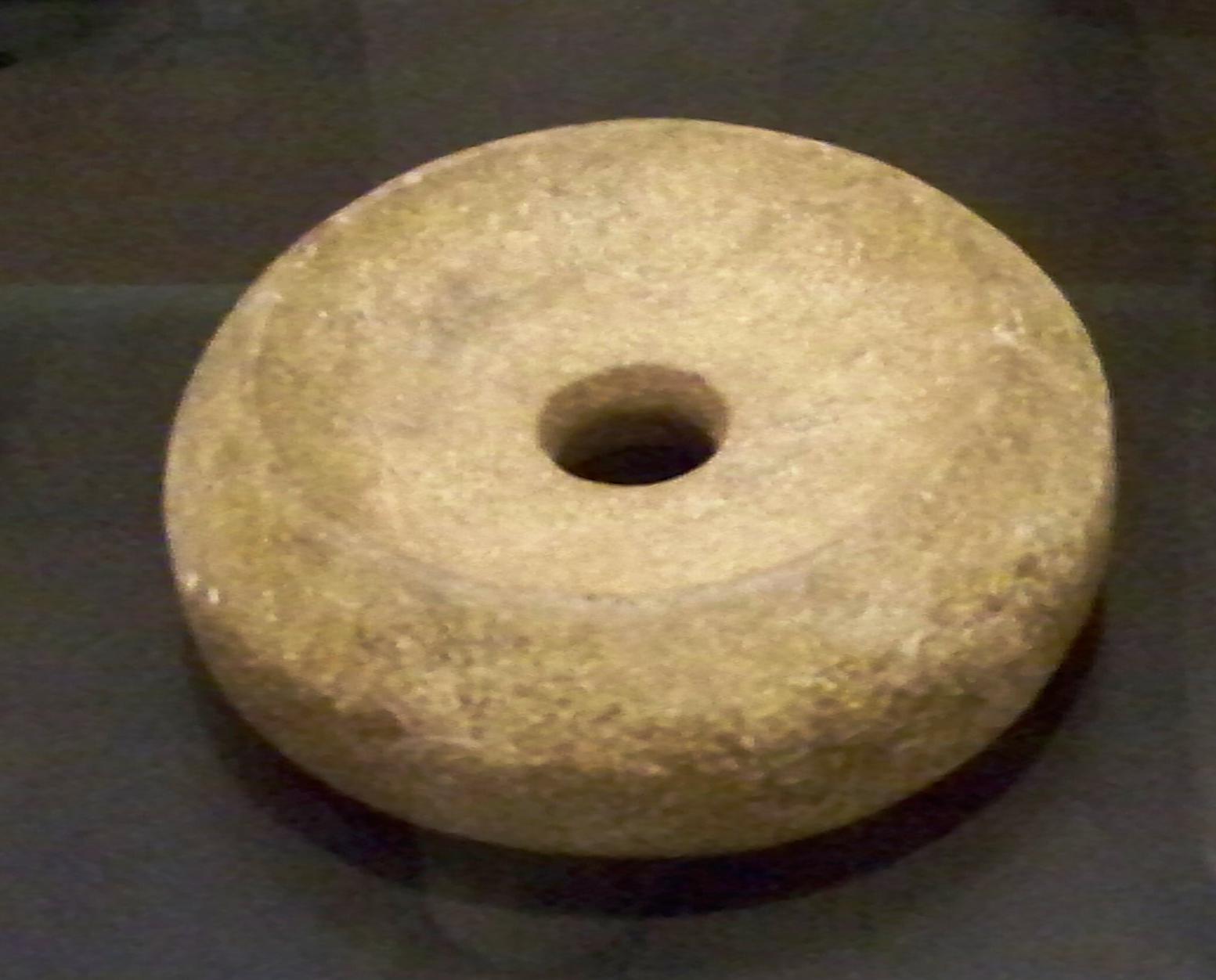
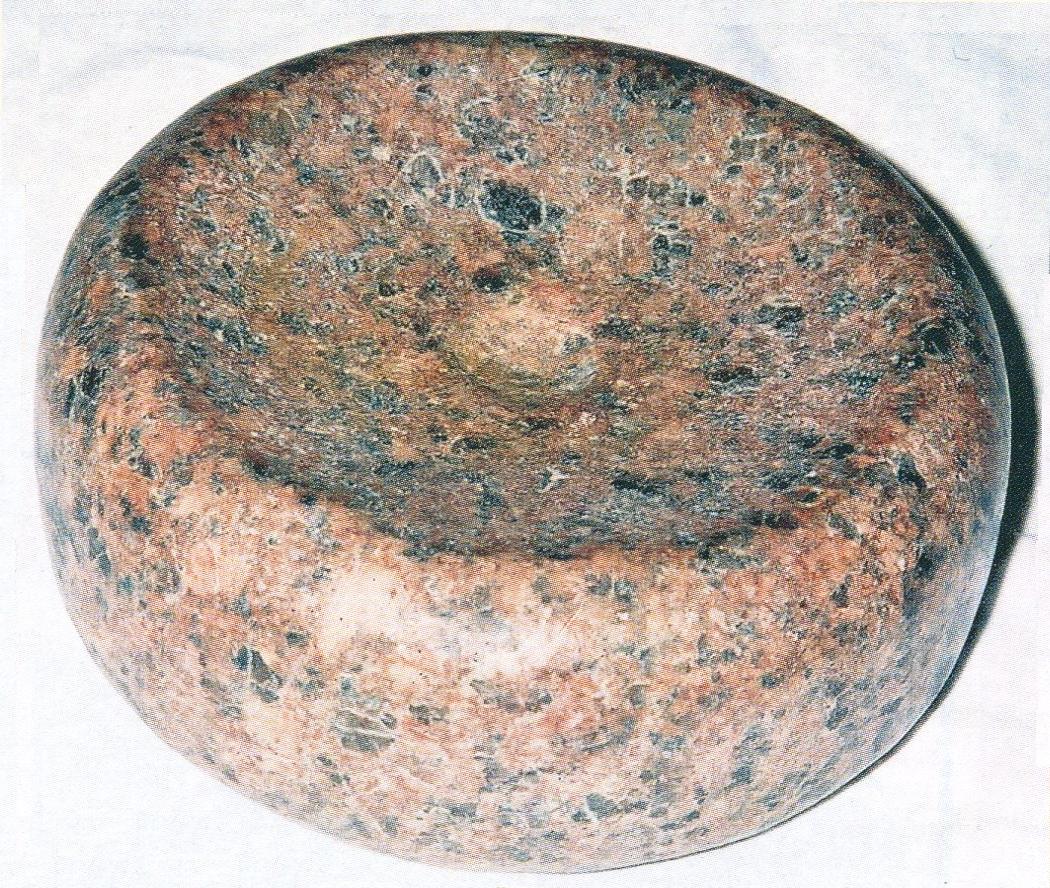
The Tennessee style is one of the most desirable dislcoidal styles. They are often made from the finest quartz in colors ranging from white, amber, and honey, to dark red and rich brown. There is at least one Tennessee double cupped dislcoidal made from colorful flint. Some have diameters in excess of 6 inches. The double cupped variety gets its name from the small dimple or cup centered in the discoidal’s larger cup. The Tennessee single cupped style is the same as the double cupped style in all ways except the small center cup is omitted. This style is considered a Southern style dislcoidal having its greatest concentration in Eastern Tennessee and northern Georgia, but it has been found as far West as southeastern Missouri.
THE CAHOKIA STYLE
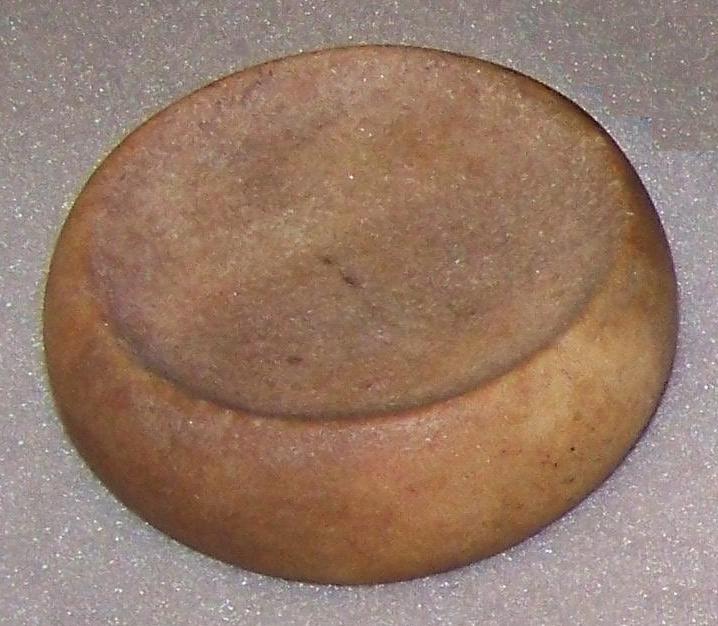
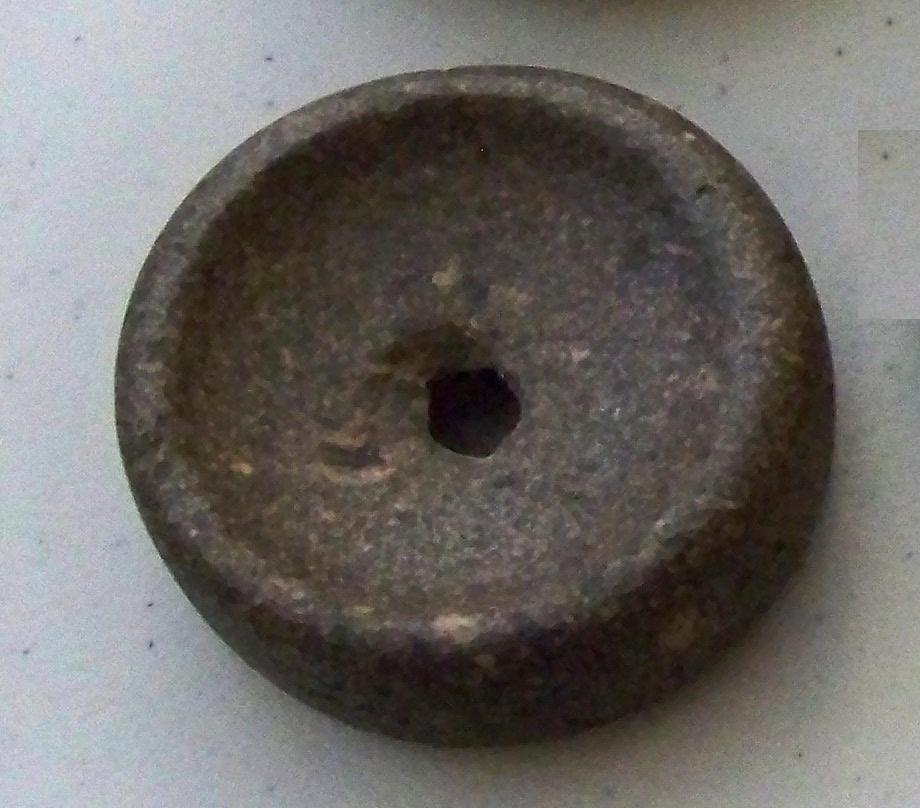
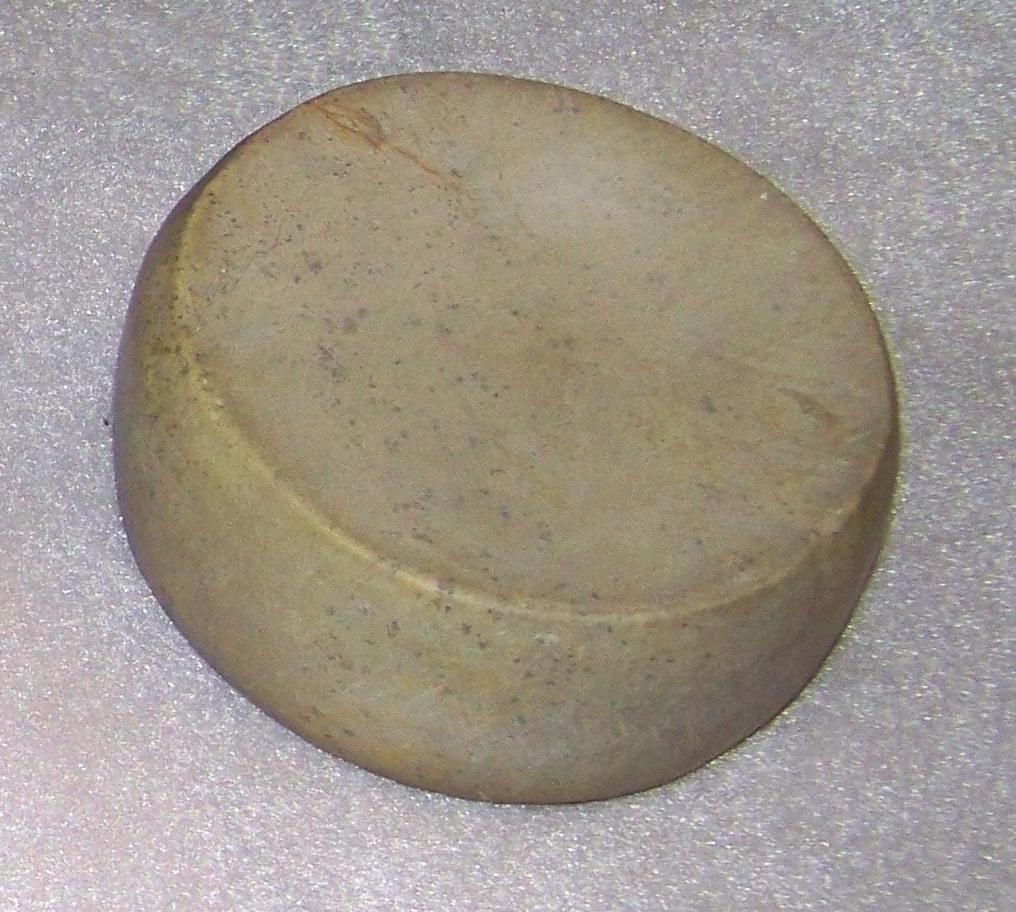
Another extremely popular dislcoidal style is the Cahokia style, which has at least three major varieties. The first variety refers to a dislcoidal with the cup that nearly reaches the edge of the dislcoidal. The cup slopes gradually toward the center of the dislcoidal where it reaches its maximum death. Some cups are so thin that light can easily pass through the center of the dislcoidal. The second Cahokia variety has a very thin and sharp edge. The depth of the cup is rather uniform from the edge to the center. The first two varieties are very narrow compared to their relative diameter. The third variety is the Mound 72 style, named for the discoidals excavated at Cahokia’s mound 72. This style has a wide cup and relatively thin edge, but it is much thicker than the first two Cahokia styles and tends to have a more rounded circumference. Cahokia discoidals are usually made of colorful quartz, but some are made from granite. Classic Cahokia dislcoidals usually range from 2 to 4 inches in diameter. A few have a perforation in the middle of the cup. Find and distribution patterns show that Cahokia dislcoidals were primarily used in Illinois and Missouri from the Illinois River to the Missouri boot heal; however, the perforated varieties do appear in western Indiana.
THE SALT RIVER STYLE
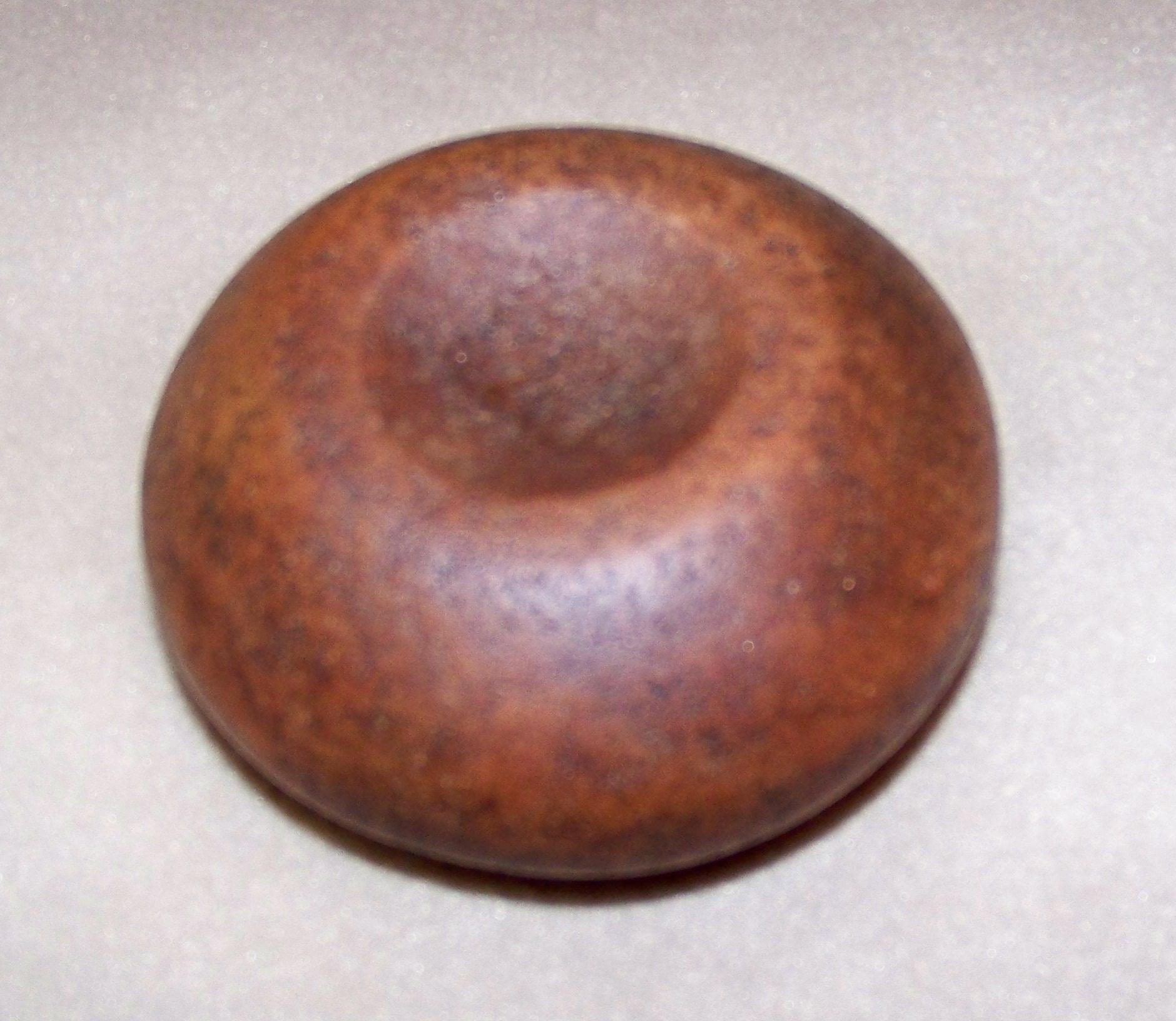
The Salt River discoidal was one of the most enduring of the discoidal styles. Named after the Salt River in eastern Missouri, it first appeared in eastern Missouri during the late Woodland times but continued until middle Mississippian times ( CA. 1350 A.D.). Although occasionally found at the Cahokia complex (Madison and St. Clair counties in Illinois), it is most often found in parts of northeastern Missouri. It is relatively unknown in Mississippian lands outside this limited area. It’s distinctive V-shaped outer rim and relatively narrow cup make it one of the most unusual styles. The Salt River style ranges in size from 2 inches in diameter. They were most commonly made from granite and dark hardstone, but they were occasionally made from quartz.
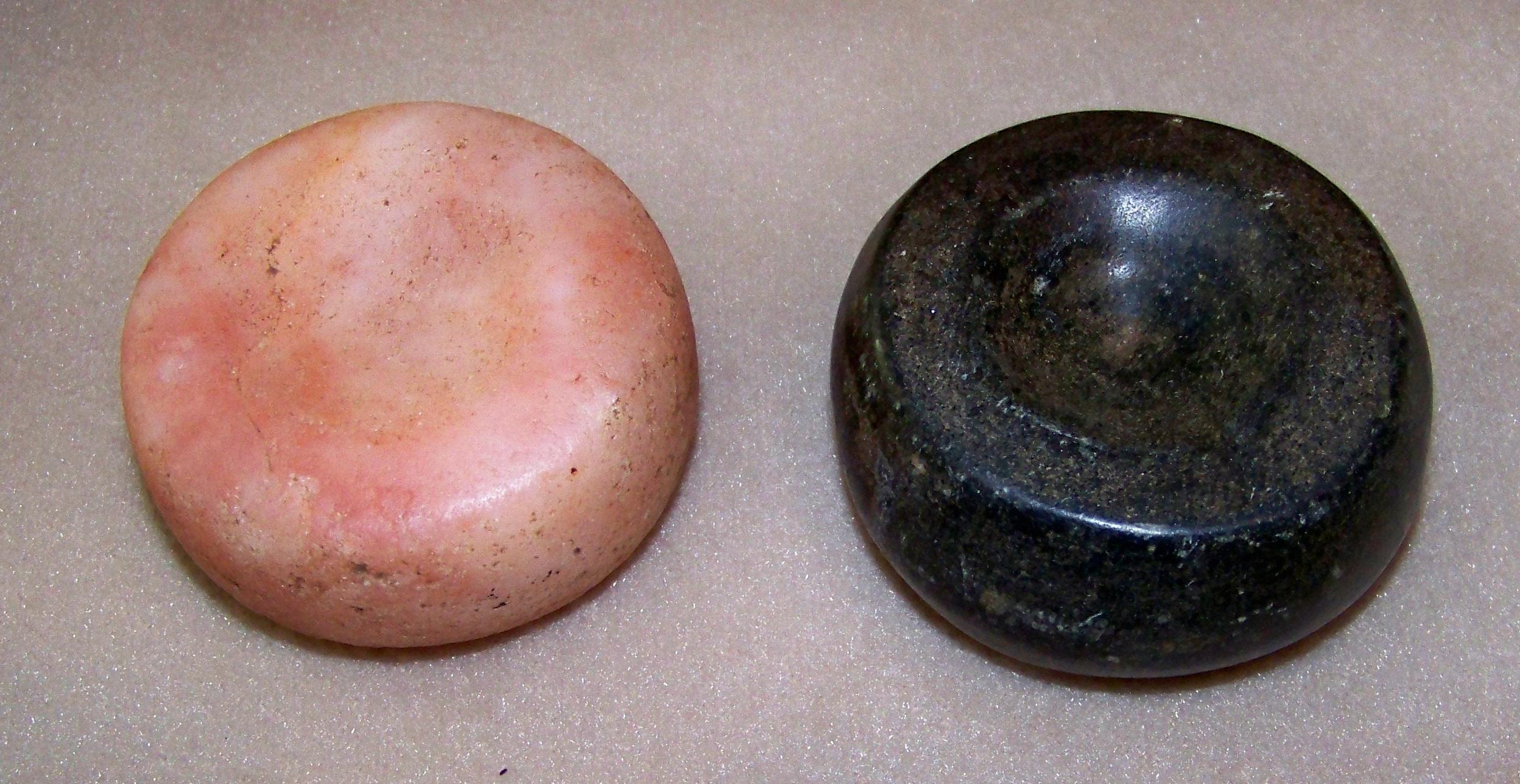
The Fort Ancient type was illustrated by Lar Hothem in Ornamental Indian Artifacts, page114. The Fort Ancient site is located in Tennessee, but the type is known to occur in Georgia, Kentucky and Ohio. This type occurs with and without the central perforation and has a moderately wide, flat surface between the rim and the central cup.

The Jersey Bluff type was illustrated by Lar Hothem in Ornamental Indian Artifacts, pages 104-105. This type has rounded sides that meet at the sharp to rounded rim of the cup. The type is does not appear to have any perforated examples. The Jersey Bluff culture was named by Dr. Titterington at the Nutwood site in Jersey County, Illinois. Examples of this type are known from Jersey County and the surrounding areas.
THE APPLE STYLE
The Apple discoidal is one of the rarest types. It is so named because of its general appearance. Each side has a rather narrow cup in relationship to its diameter. Some cups can be rather deep. Find and distribution patterns suggest that the Apple discoidal was only a regional style, limited to southern Missouri and northern Arkansas. Sizes range from 2-1/2 inches to over 4 inches in diameter. Of all the discoidal styles, this one style seems best suited to fit in the chunkey players” hand as it was rolled at high speed on the chunky field.
THE BISCUIT OR BRADLEY STYLE
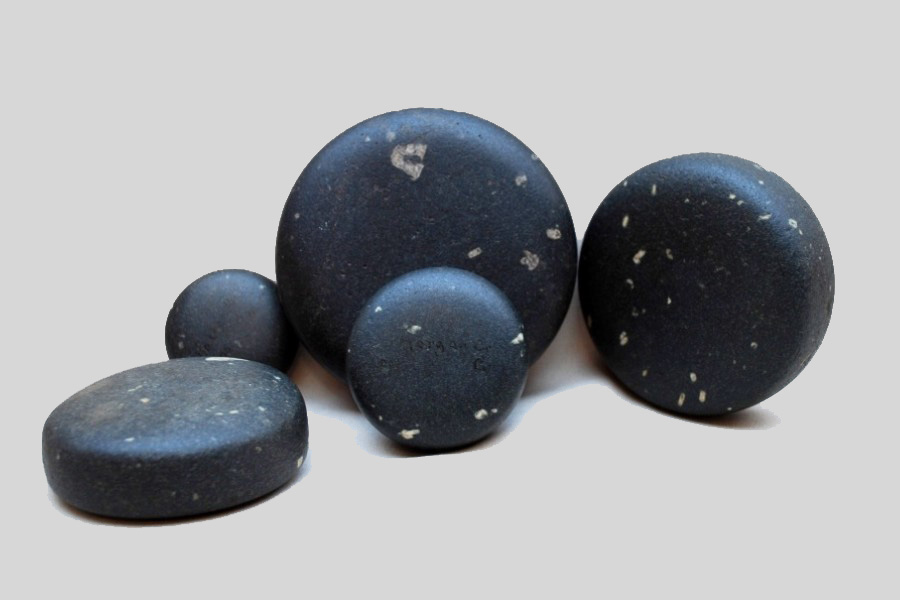
The final three discoidal styles have no cups at all. They are the Biscuit, the Circle Roller, and the Barrel. The Biscuit style, sometimes called the Double Convex style or Bradley style, is a rather late Mississippian type. It was introduced around 1350 A.D. and lasted until, protohistoric times. It was favored South and east from the Missouri boot heel, but it did not seem to be popular in Illinois. Apparently the Illinois Mississippians preferred cupped discoidals. Biscuit styles range in size from 2 to over 4 inches in diameter, and they were usually made from quarts, hardstone or flint. Flint biscuits are very rare and are usually found in Tennessee, northern Alabama and Georgia.
THE CIRCLE ROLLER

The circle roller style is unique among all discoidals in that it is the only style that is not symmetrical. One side is flat and the other side is domed. Excavations in North Georgia suggests that this disloyal style may have been used for an entirely different game then chunkey. Its fined and distribution pattern suggests that it was a northern Georgia style, perhaps radiating from the Etowah complex near present-day Cartersville, Georgia. Circle roller discoidals are made from some of the most attractive stone materials ever used for discoidals. They are encountered in beautiful amber, quartz and other translucent materials. The Circle roller style ranges in size from 2 to nearly 4 inches in diameter.
THE BARREL STYLE

The last discoidal style is the Barrel. It is perhaps the oldest and most cumbersome of all the discoidal styles. Found primarily in Tennessee, it derives its name from its general barrel shape. A rare style, it is the only type that can have a height greater than its diameter. Barrel discoidals are usually very tall, large and heavy. Some Barrel discoidals reach a height of over 5 inches and may be nearly 5 inches in diameter. It is difficult to imagine how a man could roll such a large and awkward discoidal very far. The largest Barrel discoidals may have been ceremonial.
A UNIQUELY FLORIDA STYLE
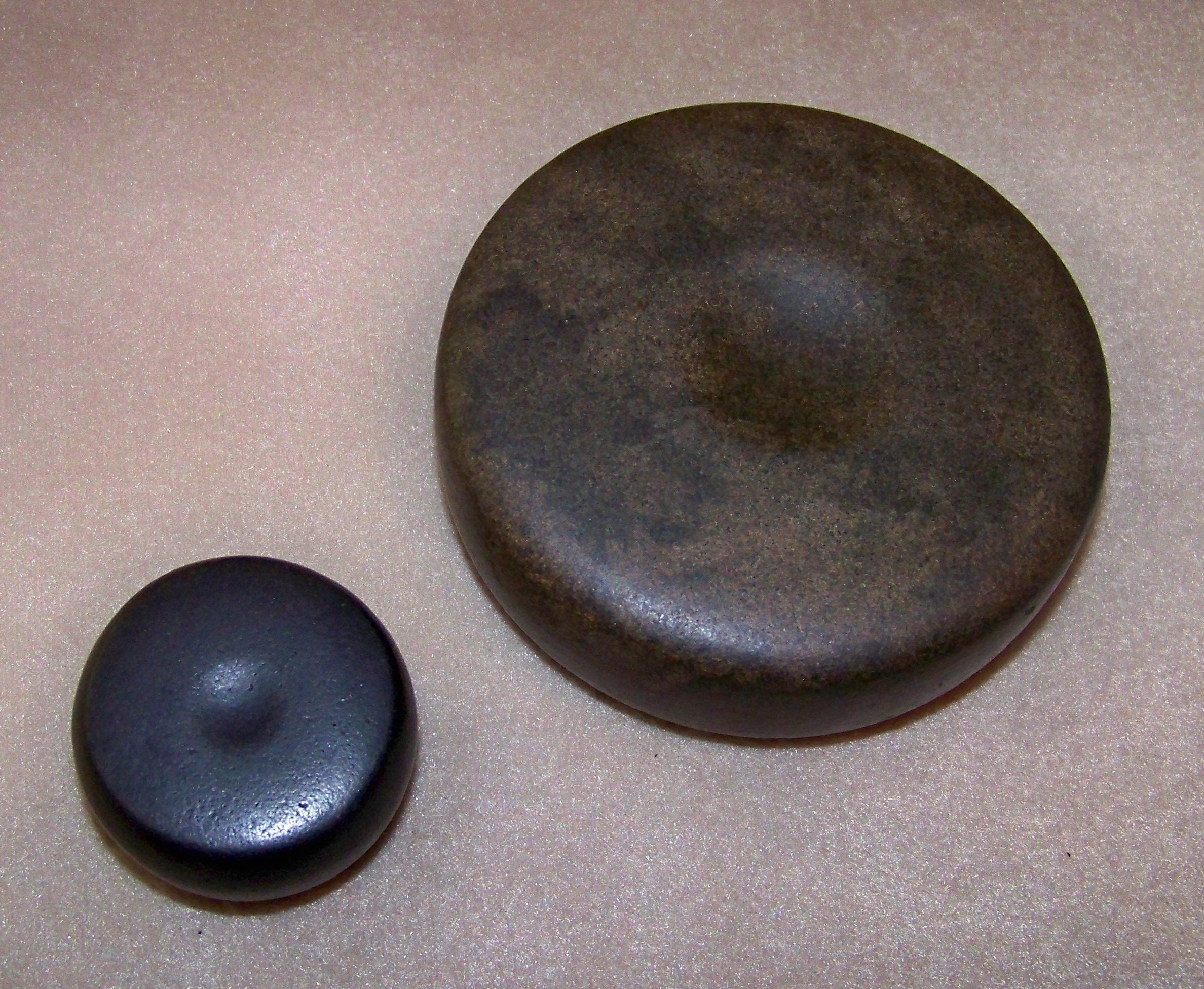
This unusual discoidal type appears only in Florida. Florida discoidals can measure from about 2 inches (left) to as large as 4 inches (right). The larger example is from just above the Florida/Georgia line while the smaller example was recovered well within Florida. The central cup is small and is located far from the rim as shown, but the reverse side is convex and has no cup at all.
A MEIGS COUNTY STYLE

This unusual style seems to be localized along the Tennessee River in Meigs County, Tennessee. This example measures about 2.5 inches in diameter and stands over 2 inches in height. this type has a sharp median ridge along its cercomfrance and is domed on both top and bottom without any cup. Lar Hotham illustrated this type in Ornamental Indian Artifacts,page 110, calling it a Salt River type. The example illustrated by Hotham was from southwestern Illinois.